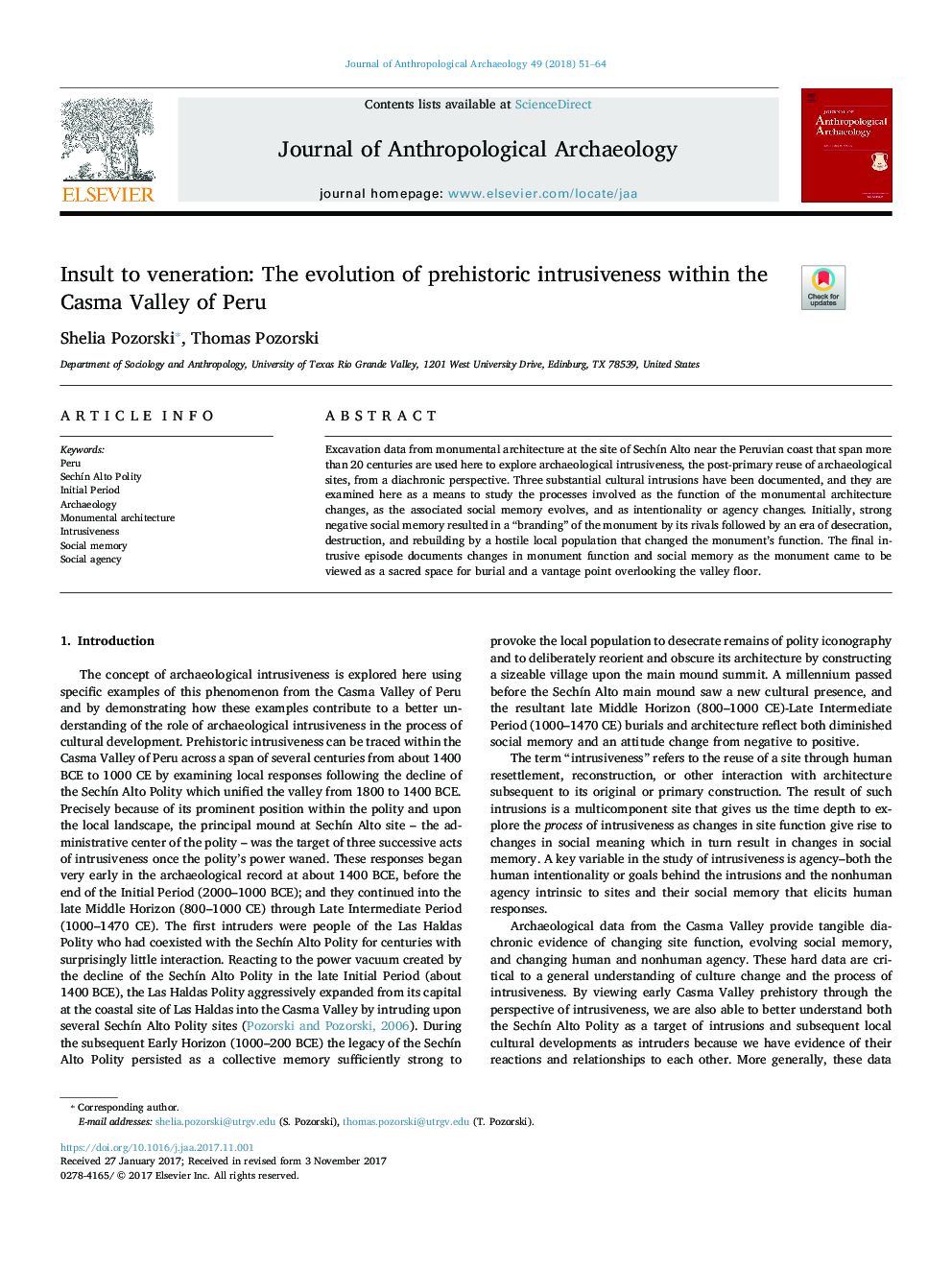| Article ID | Journal | Published Year | Pages | File Type |
|---|---|---|---|---|
| 7440433 | Journal of Anthropological Archaeology | 2018 | 14 Pages |
Abstract
Excavation data from monumental architecture at the site of SechÃn Alto near the Peruvian coast that span more than 20 centuries are used here to explore archaeological intrusiveness, the post-primary reuse of archaeological sites, from a diachronic perspective. Three substantial cultural intrusions have been documented, and they are examined here as a means to study the processes involved as the function of the monumental architecture changes, as the associated social memory evolves, and as intentionality or agency changes. Initially, strong negative social memory resulted in a “branding” of the monument by its rivals followed by an era of desecration, destruction, and rebuilding by a hostile local population that changed the monument's function. The final intrusive episode documents changes in monument function and social memory as the monument came to be viewed as a sacred space for burial and a vantage point overlooking the valley floor.
Related Topics
Social Sciences and Humanities
Arts and Humanities
History
Authors
Shelia Pozorski, Thomas Pozorski,
